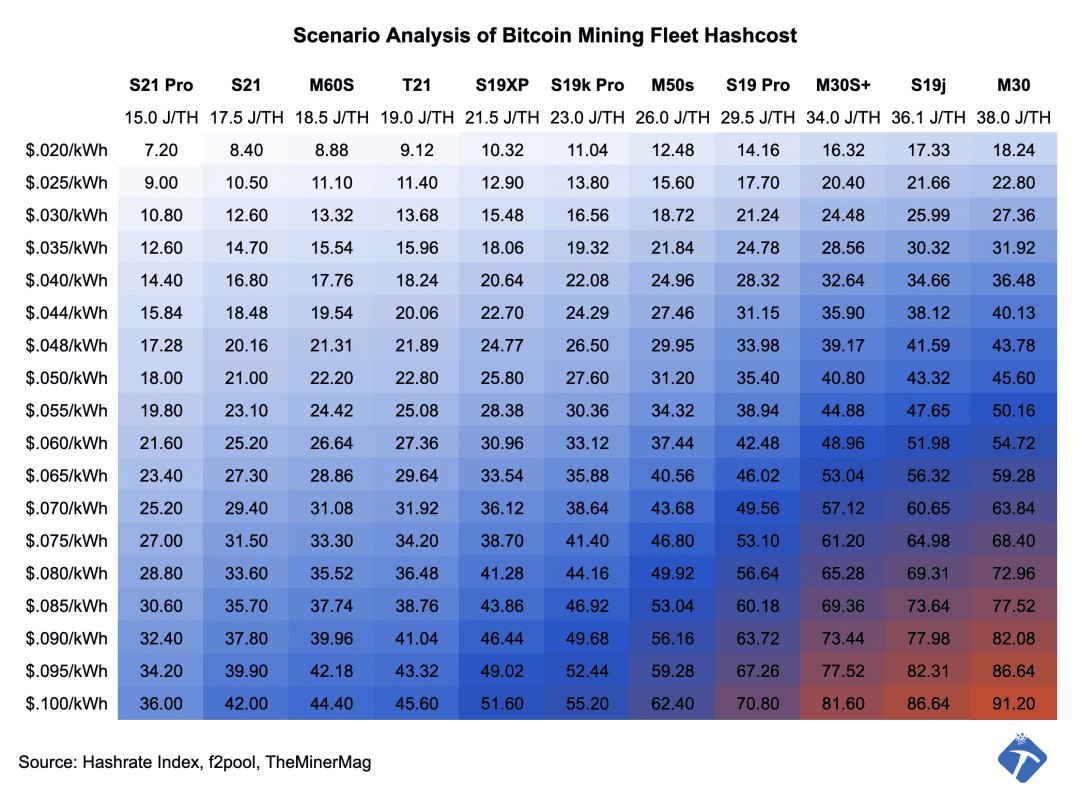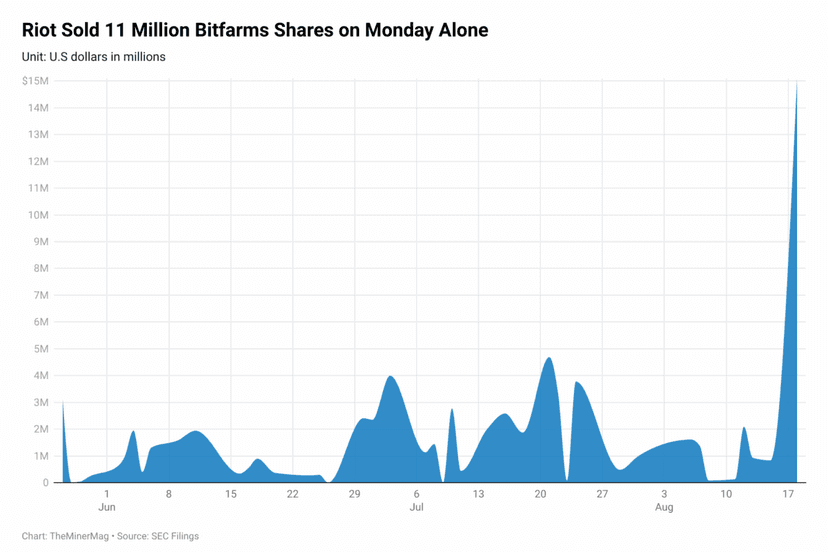Miner Weekly: Negative Margins Become a Harsh Reality Post-Halving

This article first appeared in Miner Weekly, BlocksBridge Consulting’s weekly newsletter curating the latest news in bitcoin mining and data analysis from TheMinerMag. Subscribe to receive in your inbox once a week.
Bitcoin’s hashprice has finally reached new all-time lows over the past week, falling under $50/PH/s. As of writing, it went even lower to $45/PH/s, marking a 75% decrease from the brief peak of $180/PH/s we saw right after the halving.
There is really nothing one can do about the hashprice—the dollar value of daily mining revenue per each PH/s of computing power—as an individual miner. What mining operations do have control over, though, is the hashcost, whether it is the fleet hashcost, or corporate and financial hashcosts.
The table above maps out the scenarios of bitcoin mining fleet hashcosts at different energy levels and equipment models.
For instance, at a power cost of $0.07/kWh, a miner operator will incur a daily fleet hashcost of $49.56 for running each PH/s of S19 Pros on average. This cost is already higher than bitcoin’s current hashprice, implying a negative gross margin. And this calculation does not even include other applicable corporate or financial hashcosts.
In short, the dark blue range of cells is where the danger zone is at the moment, while those in the red cells are seeing major gross losses. The safer range in light blue cells either has a power cost of less than $0.05/kWh or maintains a fleet efficiency better than 21.5 J/TH.
In fact, a hashprice of $45/PH/s is already lower than the Q4 fleet hashcosts of several bitcoin mining companies, as estimated by TheMinerMag. With corporate and financial expenses included, most of them were estimated to have a total hashcost above $50/PH/s. Riot was the first to report financial earnings for Q1 this week and its fleet hashcost alone was estimated to be $49/PH/s, while the total hashcost went up to $80/PH/s, according to TheMinerMag’s report.
That being said, major public mining companies have stockpiled large amounts of cash and digital assets on their balance sheets after extensive equity offerings since Q4 last year. For instance, Riot alone had a working capital of $1.3 billion as of Mar. 31, consisting mainly of cash and nearly 8,500 BTC they have in reserves.
But the silver lining is perhaps bitcoin’s hashrate is set to decline, shaking out inefficient mining operations and easing the network difficulty for those who are standing through.
As of writing, bitcoin’s seven-day average hashrate has already dropped to 600 EH/s, down from 650 EH/s right after the fourth halving event on April 20. The difficulty is currently estimated to decline by 2.4% in the next adjustment around May 9.
Regulation News
- Bitcoin Mining Machines worth THB200 Million ($5.4M) Seized in Two Provinces – Nation Thailand
- New Bill Would Grant Regulatory Power Over Crypto Mining to Three North Carolina Counties – NC Newsline
- Arkansas Lawmakers Approve New Restrictions on Cryptocurrency Mines After Backlash Over ’23 Law – AP
Hardware and Infrastructure News
- Solo Bitcoin Miner Wins the 3.125 BTC Lottery, Solving Valid Block – Cointelegraph
- Bitcoin Hashprice Hits All-Time Low Under $50/PH/s – TheMinerMag
- Mawson Plans to Expand Midland, PA Power Capacity to 120 MW – Link
Corporate News
- Iris Energy Increases Operating Hashrate to 9 EH/s – Link
- Coal Miner Alliance Resource Dabbles In Crypto Mining, Mines 425 BTC – CoinDesk
- MARA Pool Mines 11% More Bitcoin Blocks in Hashrate Recovery – TheMinerMag
- Blockware Sues Mawson for Unpaid Bitcoin Mining Equipment – BlockTribune
- Riot Raises $500M as Bitcoin Mining Hashcost Jumps to $80/PH/s – TheMinerMag
Feature
- Saving Small Town America With Bitcoin Mining – The Mining Pod






